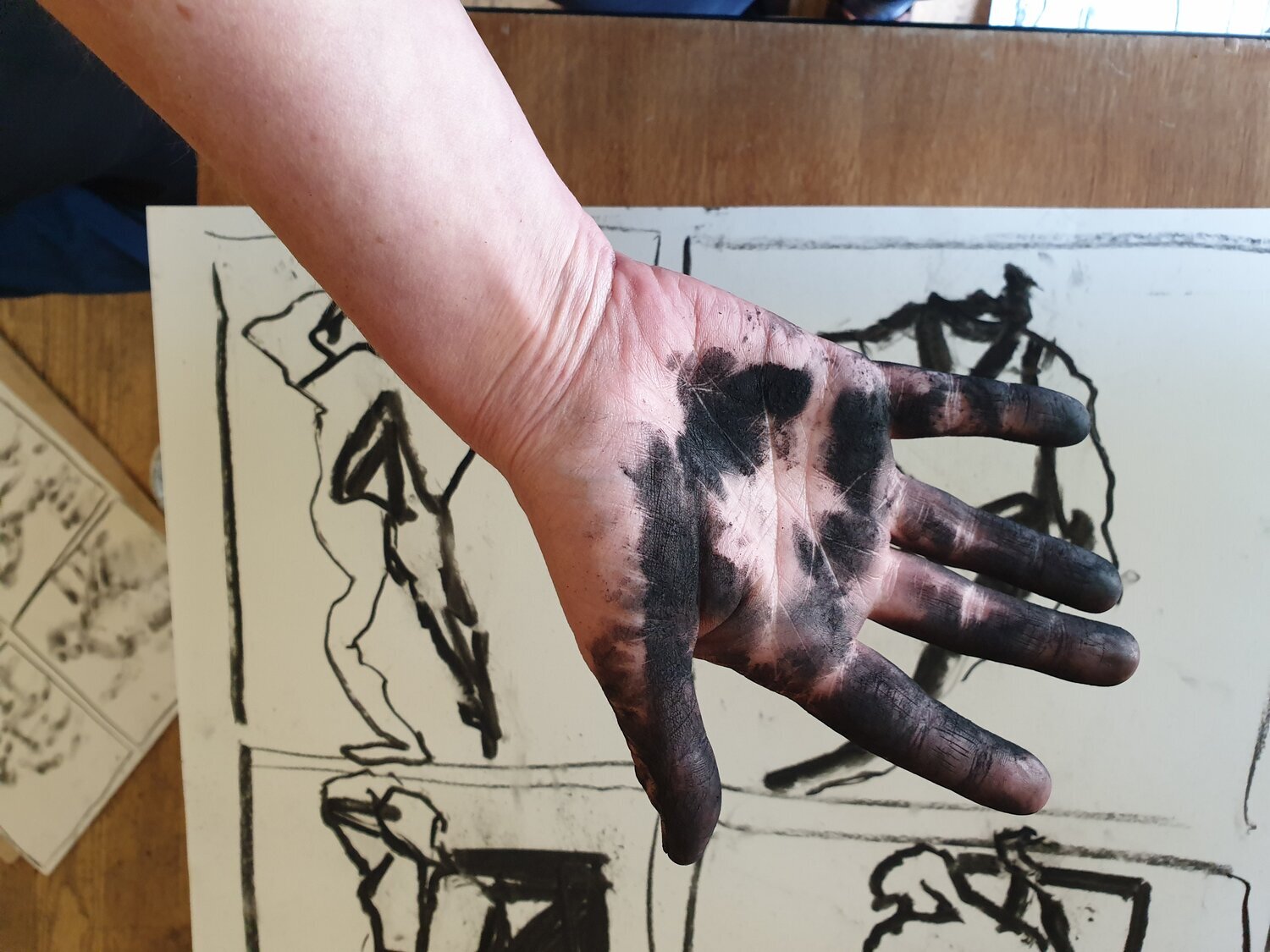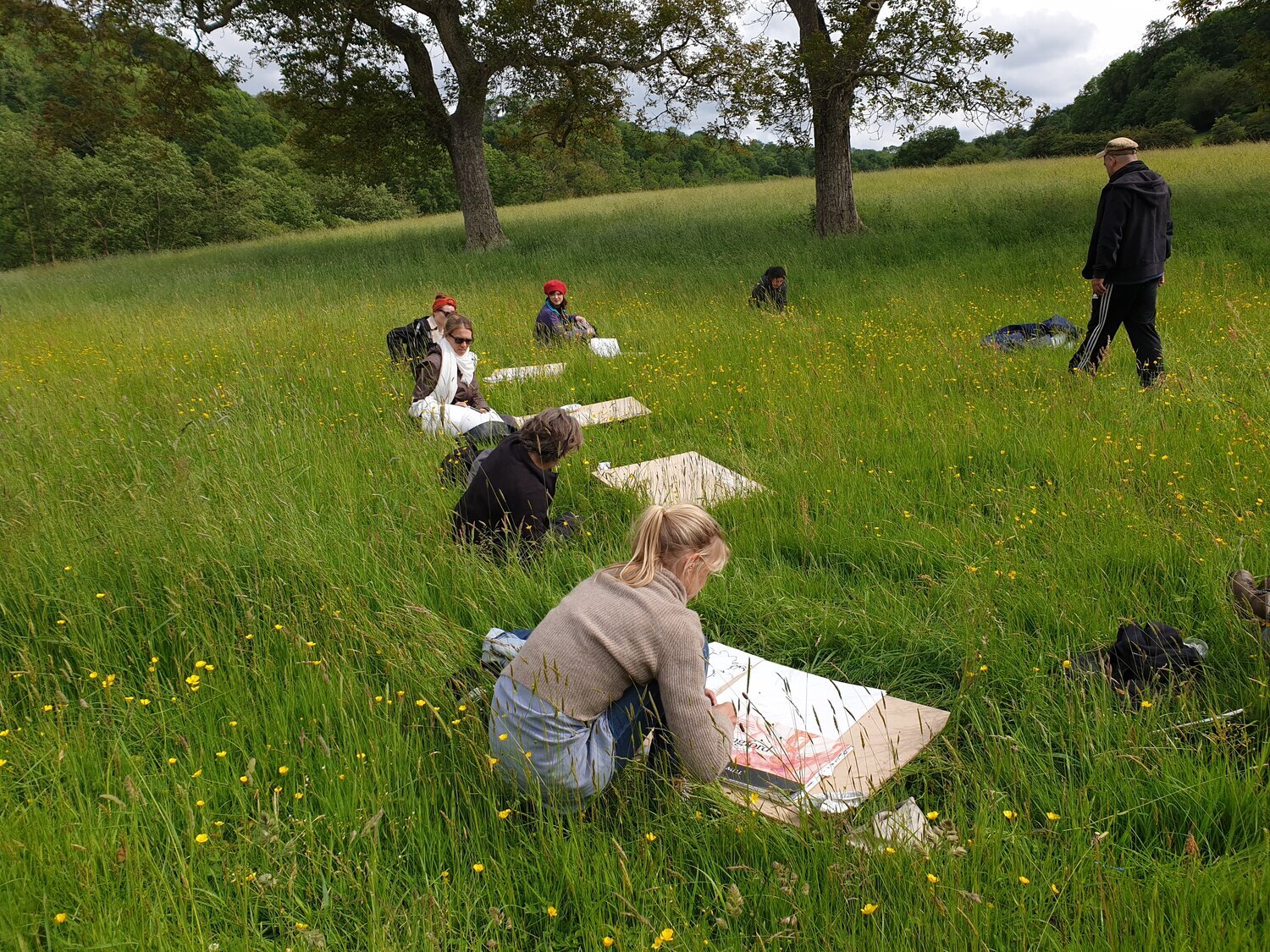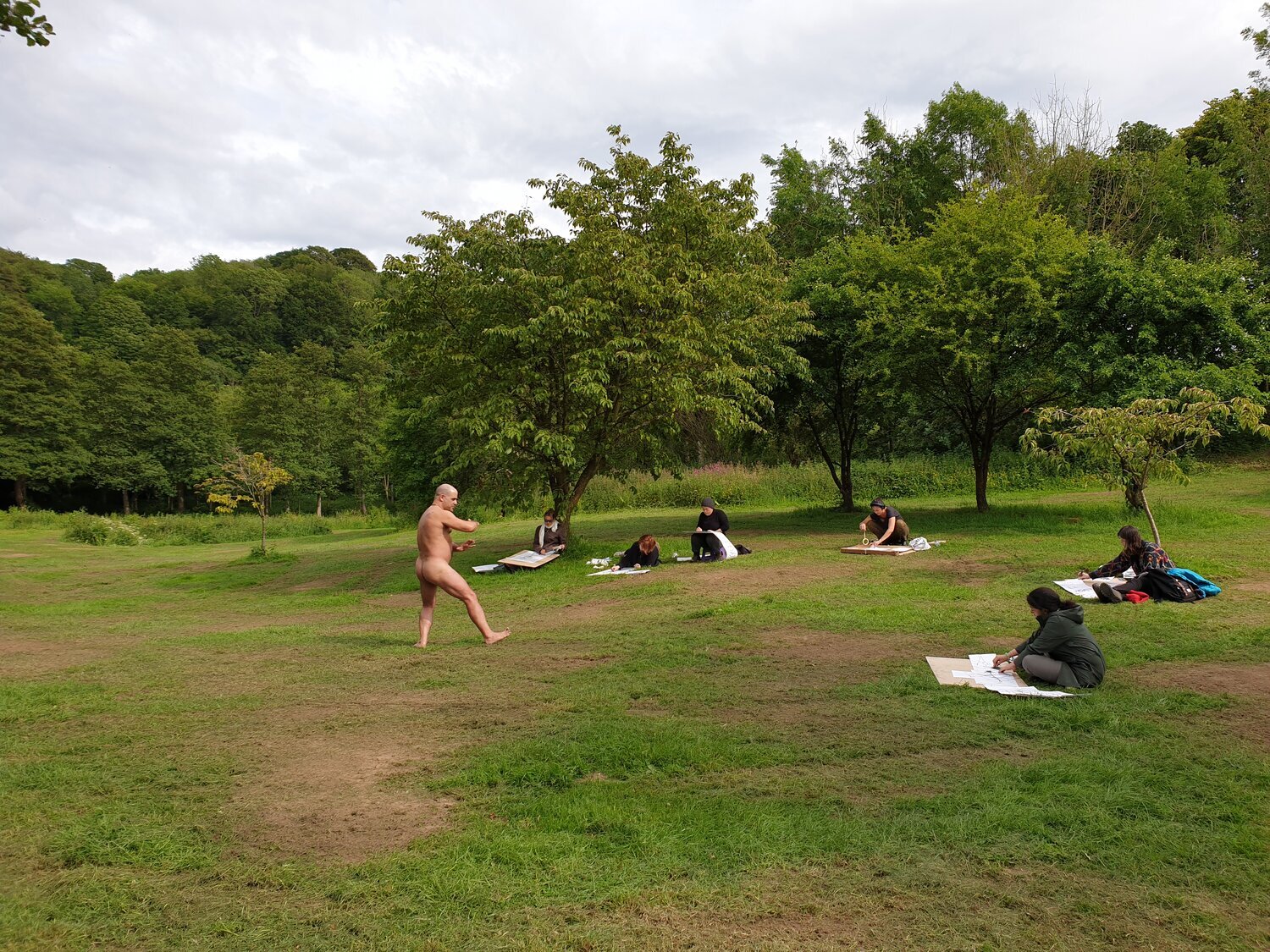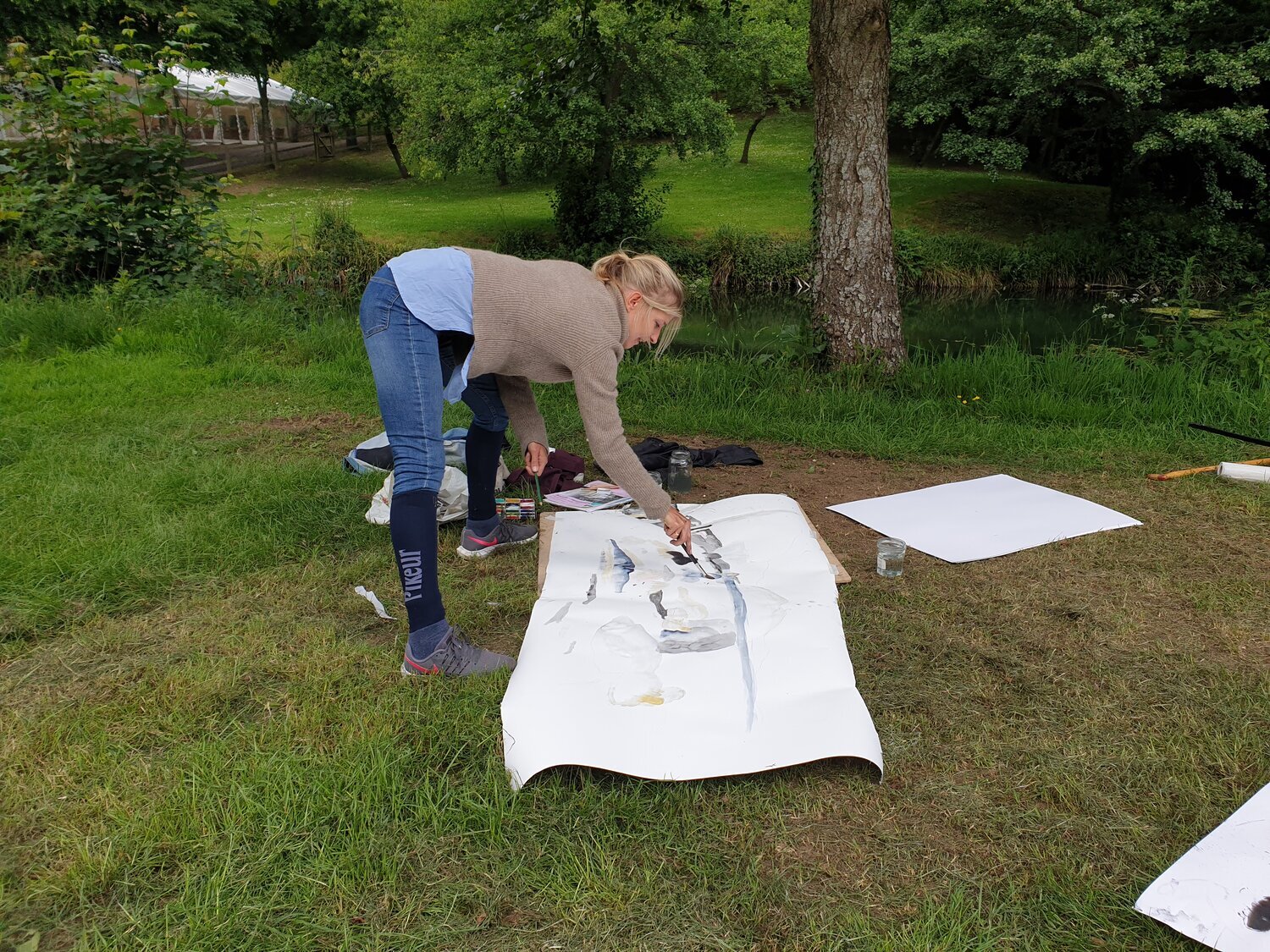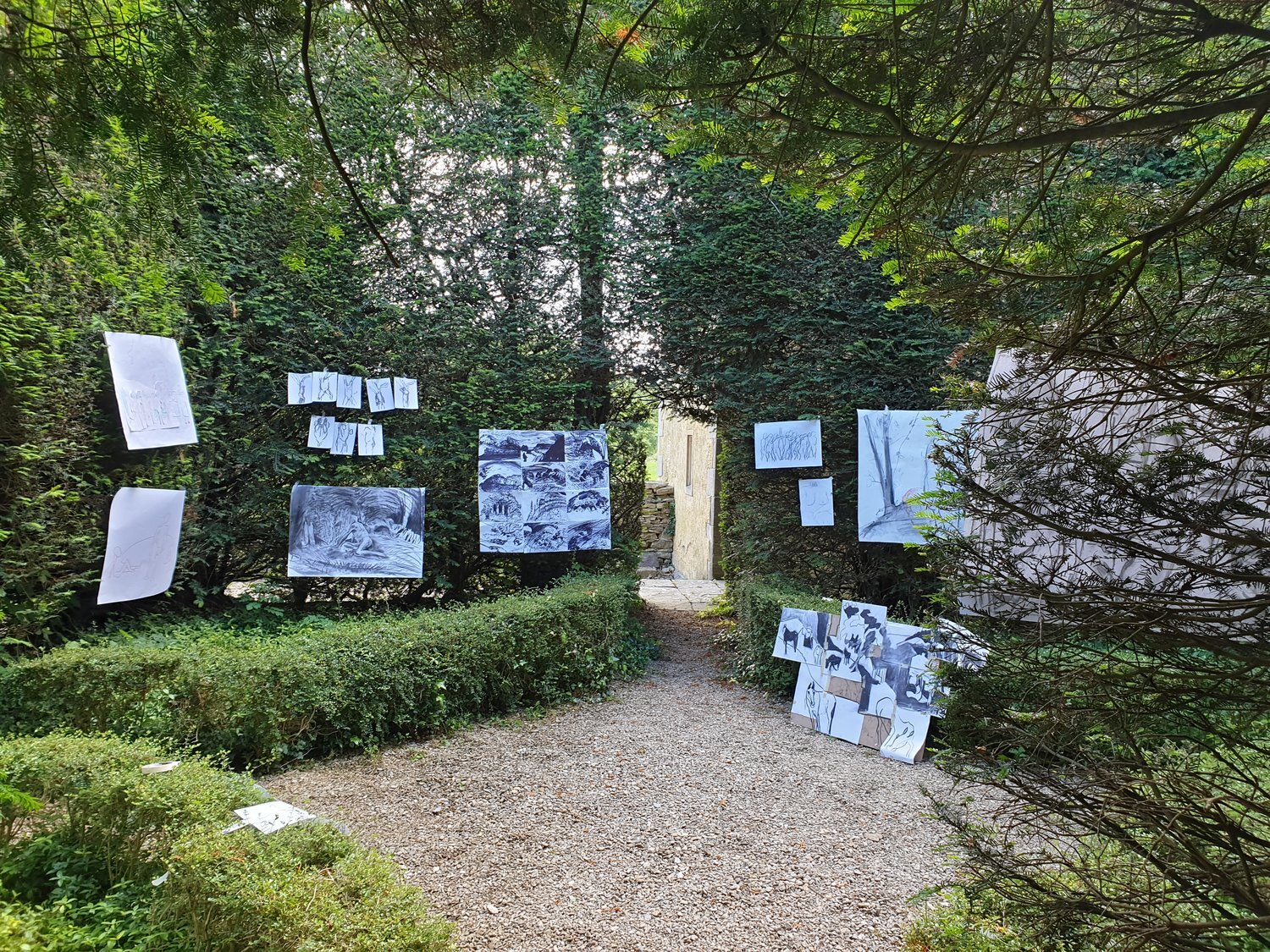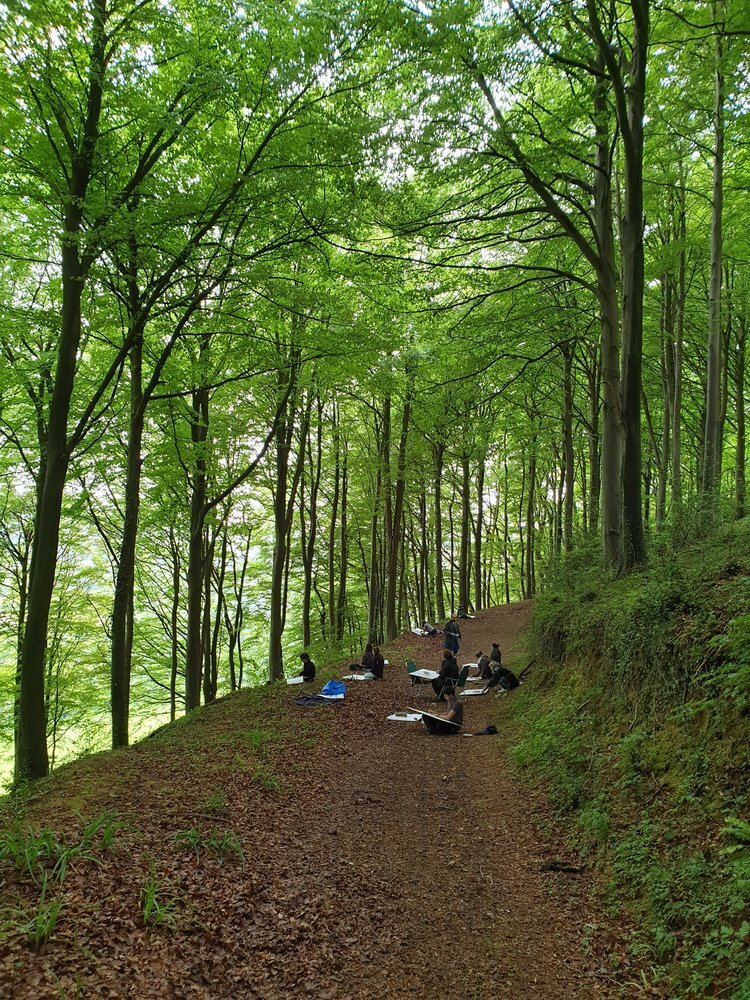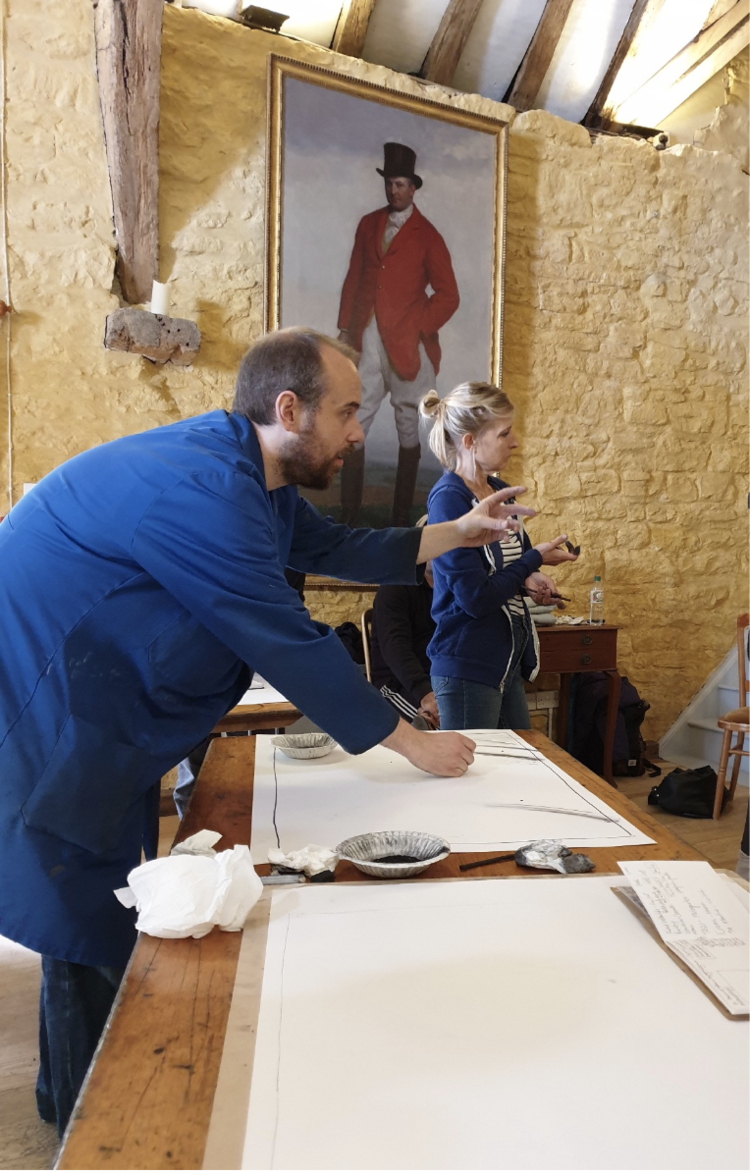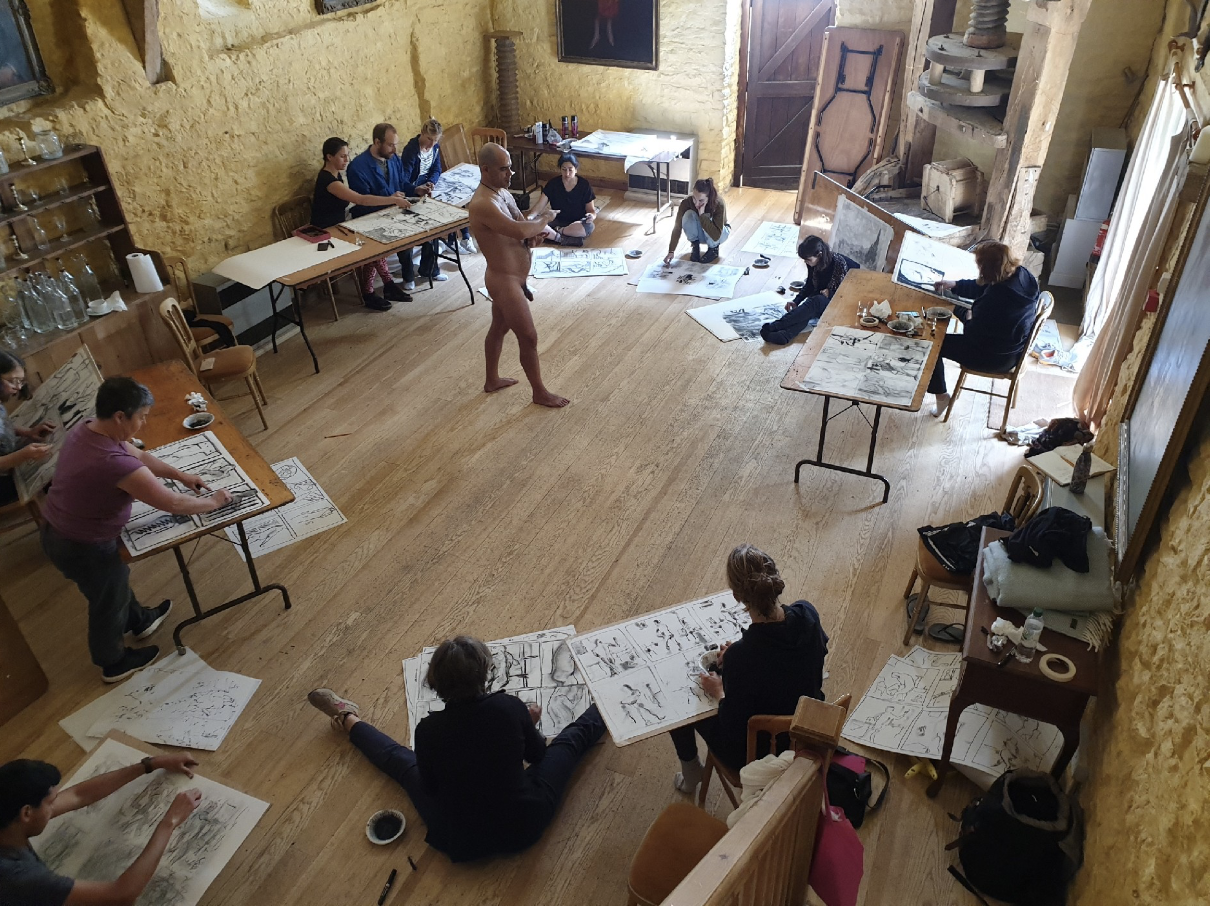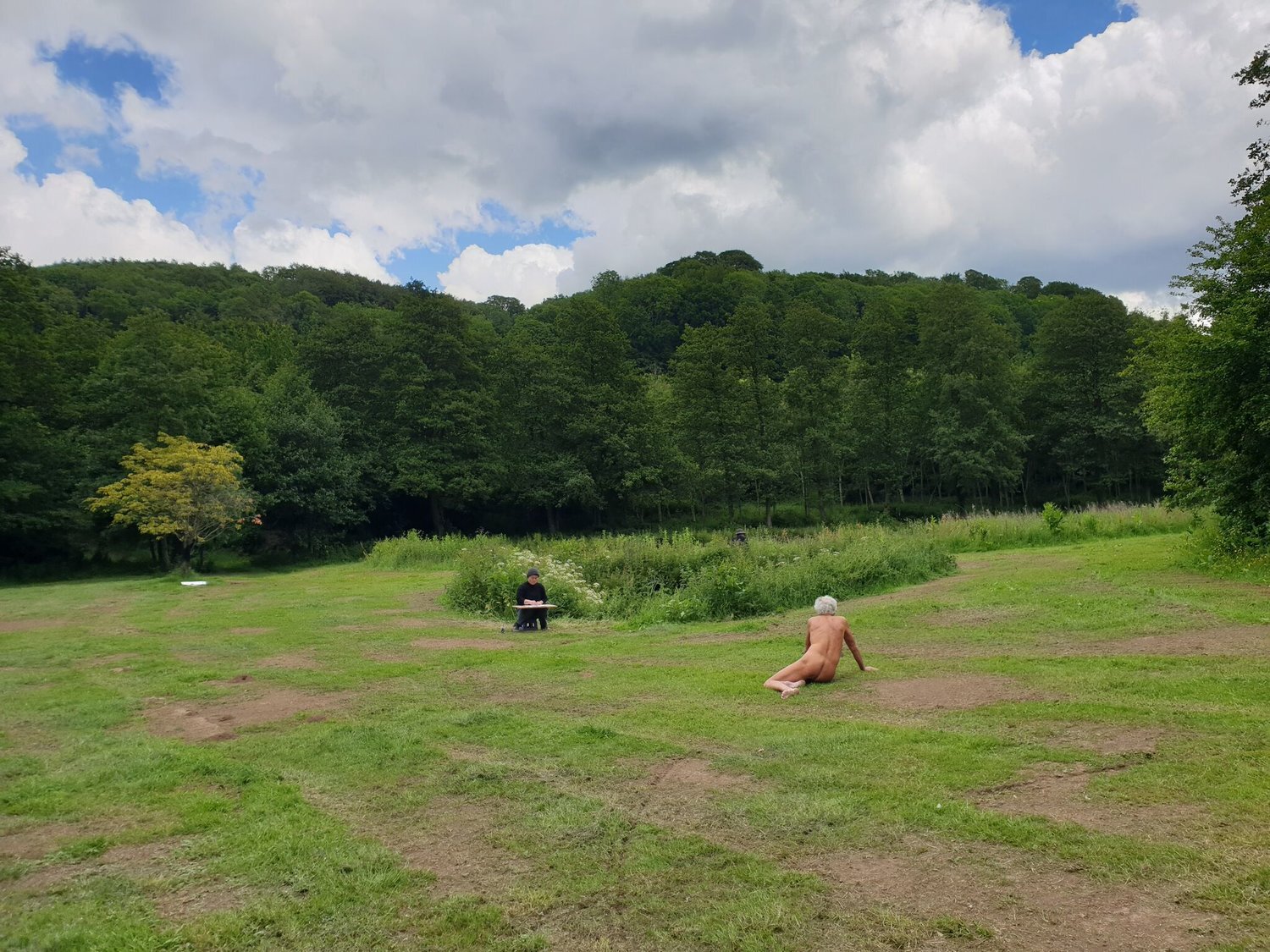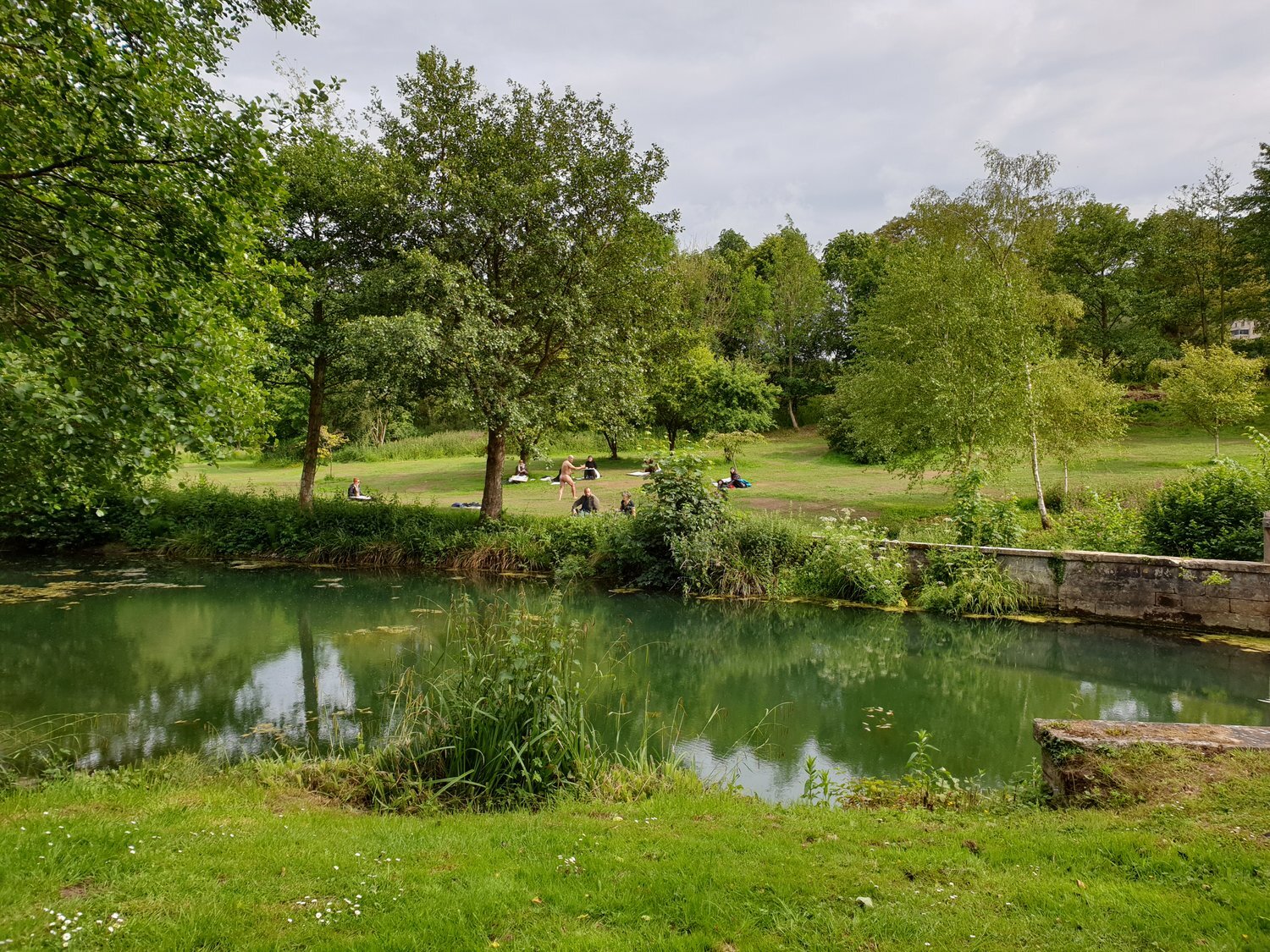Landscape
The landscape residencies take place at the Owlpen Manor Estate, described as ‘the loveliest place in England’. Situated deep in a lesser-known part of the Costwolds, it is a private Gloucestershire estate extending over more than 200 acres. It has a recorded history of close on a thousand years and it was not bought or sold before the twentieth century.
The house dates from 1450 to 1616, with careful Cotswold Arts and Crafts repairs of 1926. Its history connects it with talented artists, writers and famous visitors. The house is surrounded by ‘terraced gardens with a yew parlour and groups of neat, clipped yews remained just as they were in the time of Queen Anne’, which fell into disrepair in the early nineteenth century. The poet Algernon Charles Swinburne wrote enthusiastically to William Morris (1834-96), of Owlpen as “a paradise incomparable on earth…”. It was Norman Jewson, who bought Owlpen and, inspired by Ernest Gimson (1864-1919) the leader of the revival of Cotswold Arts and Crafts and follower of Morris’s ideals of 'fitness', proven craftsmanship and integrity of design, sensitive repair and honesty to materials, who repaired it with the help of a team of master craftsmen. Owlpen is one of few Cotswold houses where the spirit of this movement may be seen, and experienced, by the public outside a museum, and in something approaching an original context.
Welcome dinner in the Tudor Great Hall of 1523
It was in this context that Martin Morris applied his unique and powerful methods, teaching us how to see, how to connect the eye to the hand, how to disrupt our preconceptions of reality and importantly how to embrace failure and use it as a building block. He taught us how to unlearn creatively: to dispense with what we think we know, we see and how we think should be represented.
The group and the relationship of each member to the other as well as its relationship as a whole to space and to the model is key to his method. Morris re-energises the life room it, making it into a dynamic mental playground and intense workroom. Laying claim to the Cyder Barn with its rough-hewn beams erected in 1446 it became a private place of experimentation and a public place where the group would see and learn from each other. Casting off Morris awakened our collective brain and connected it to the page.
In praise of the teacher
While I am continually learning, and striving to educate the world about the importance and pleasure of sculpture, it is a long time since I have been taught or reflected on teaching as an art in itself. MM (Martin Morris) is one of a handful of teachers who change your life and your perception of the world. He is the Latin teacher who dragged you through the quagmire of grammar and made you sail on the poetry of Horace, the English teacher who made you see the universal truths of Shakespeare across time or the Biologist who showed the beauty and order of the world of plants.
His methods and his style are his own and only he has the knowledge, confidence, sensitivity and unbridled passion to communicate and convey his message. In a sense, MM is not teaching drawing. He is teaching you how to see, how to connect the eye to the hand, how to disrupt your preconceptions of reality and importantly how to embrace failure and use it as a building block. The basis of his method is to teach you to unlearn creatively, to dispense with what you thought you knew and how you think things are and how they should be represented. Having never been taught to draw at any point in my life, bereft of any ingrained style, I was the control, a willing and enthusiastic guinea pig. I was outnumbered, artistically outclassed but receptive and ready.
The group and the relationship of each member to the other as well as its relationship as a whole to space and to the model is key to his method. For Body and Place, the idea was to take the model outside what I perceived as the confines of the life room, to free drawing from life from its staid surroundings and to breathe new life into it. MM’s approach, quite rightly, was not to abandon the life room but to re-energise it, to make it into a dynamic mental playground and intense workroom. Ensconsed in Owlpen Manor’s Cyder Barn with its rough-hewn beams erected in 1446 above our heads [and walls painted in warm ochre tones, we had a sense that this was our room for the duration of the residency. Both a private place of experimentation and a public place where the group would see and learn from what the others produce, where we could cast off the anxiety of always trying getting it right, together and individually. We considered the importance of empathy in drawing, to feel what the model was feeling so we could understand it better, this is not to say empathy means feeling sorry for the person but rather to understand, at a physical level, how they feel, what they are going through and how this informs how we see; how we draw. MM awakened our collective brain and connected it to the page. “Drawing creates reality’, as he put it.
Claire Mander, June 2019

